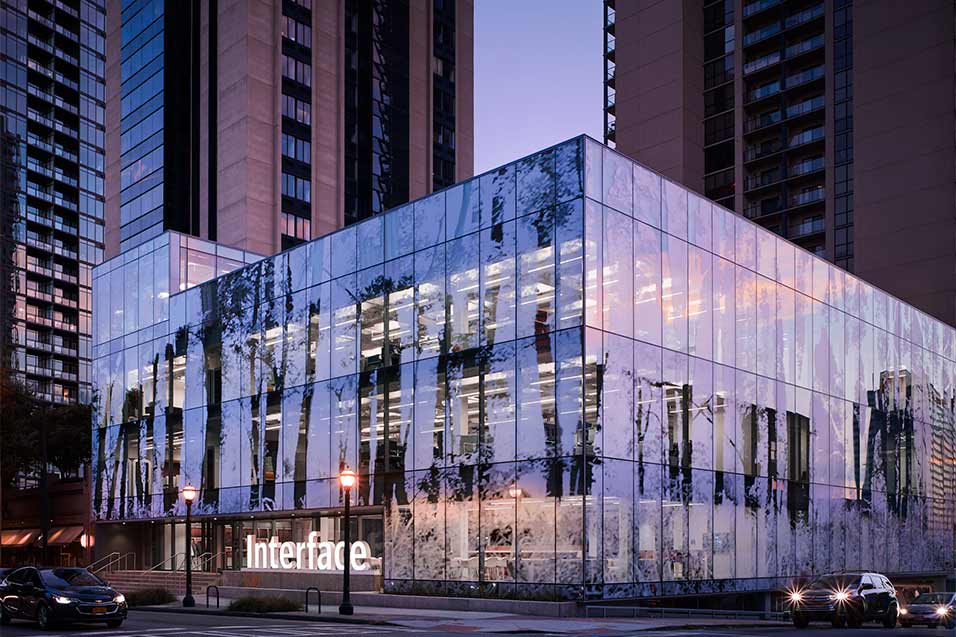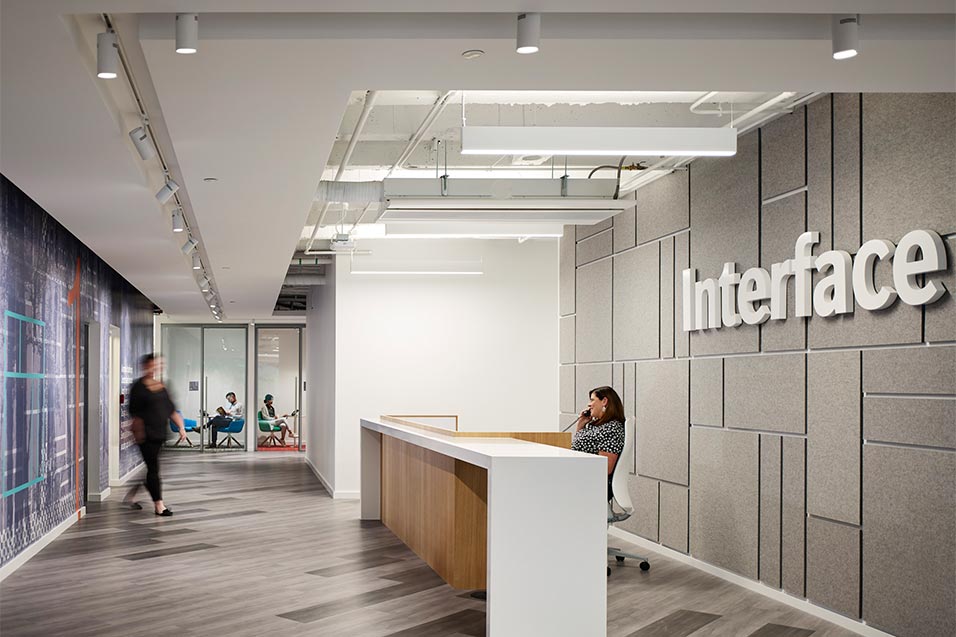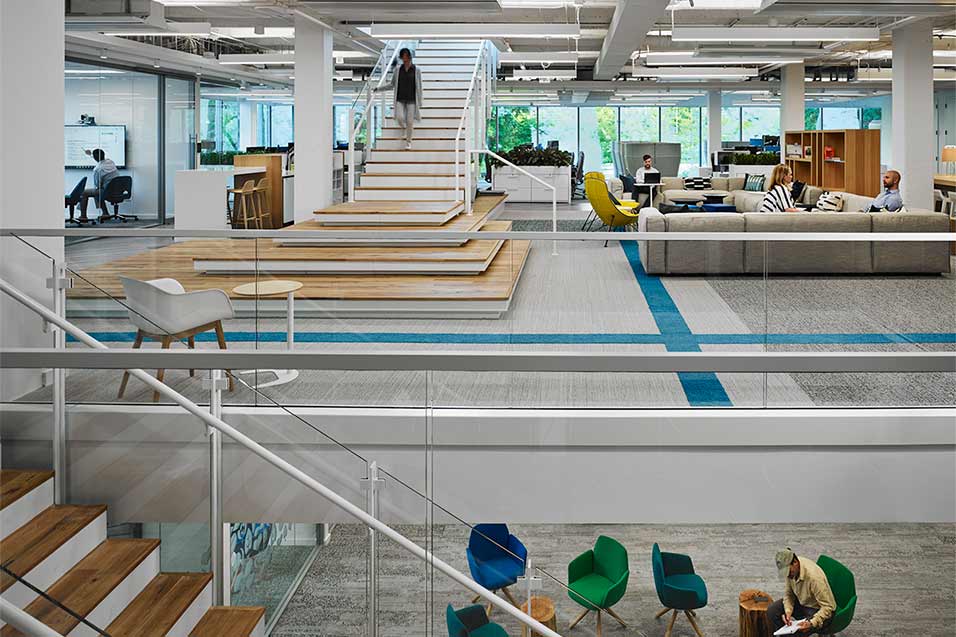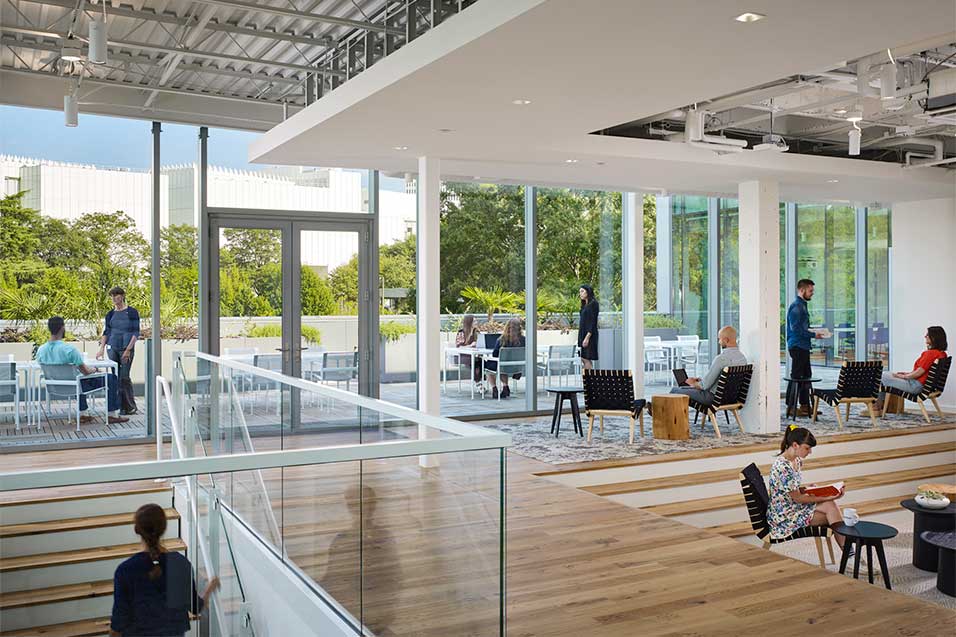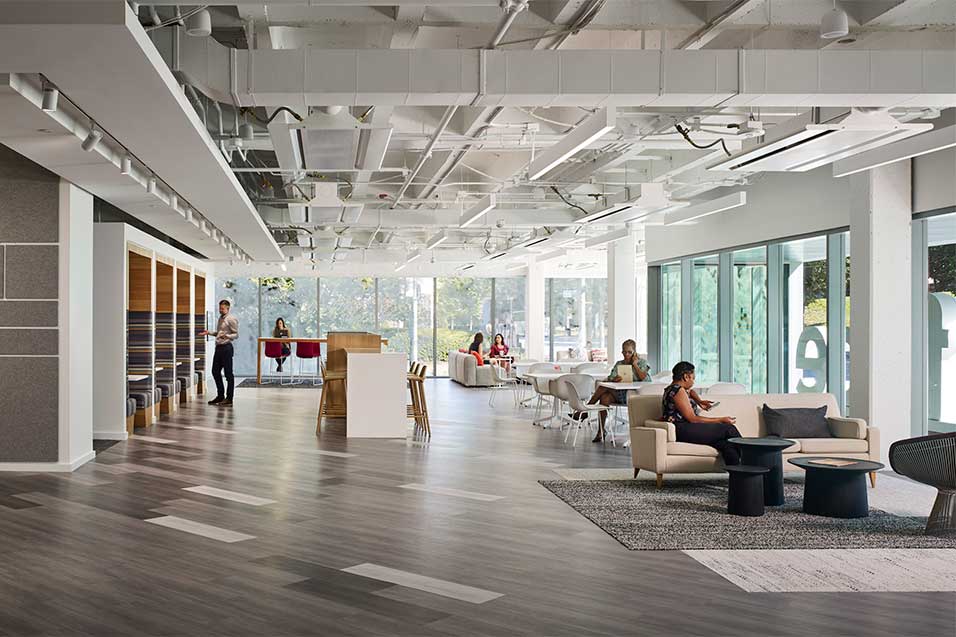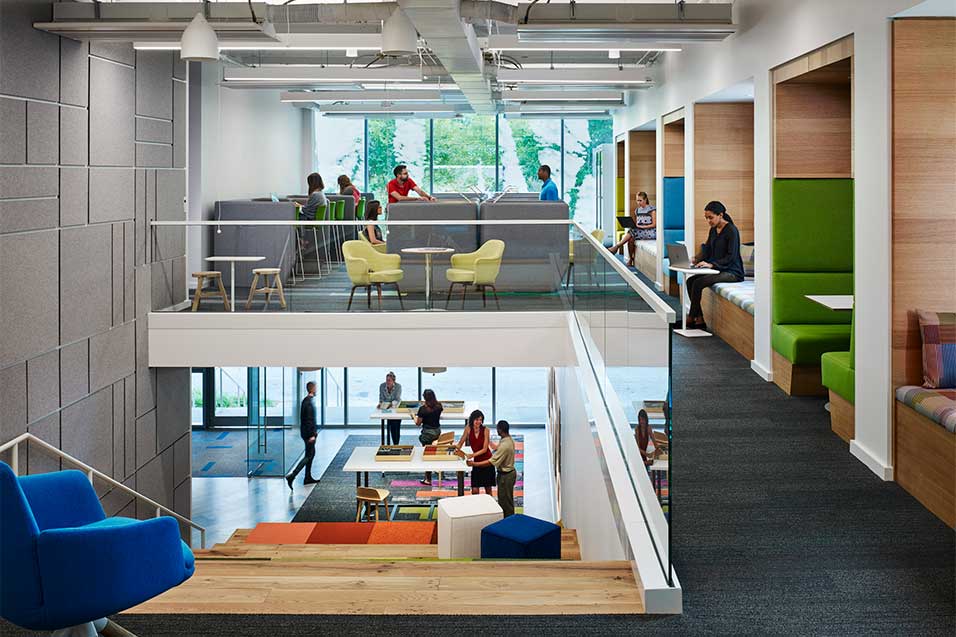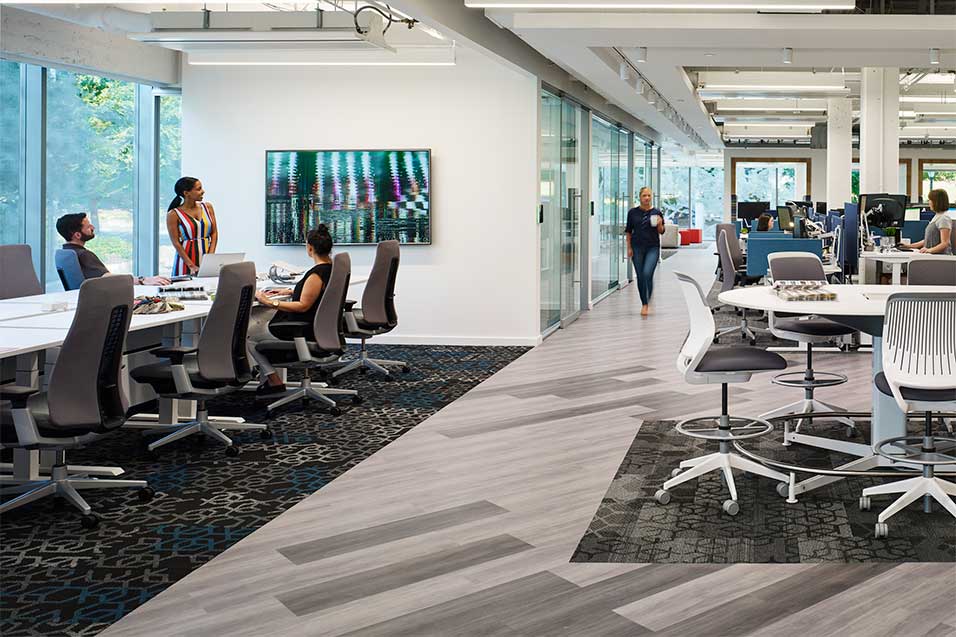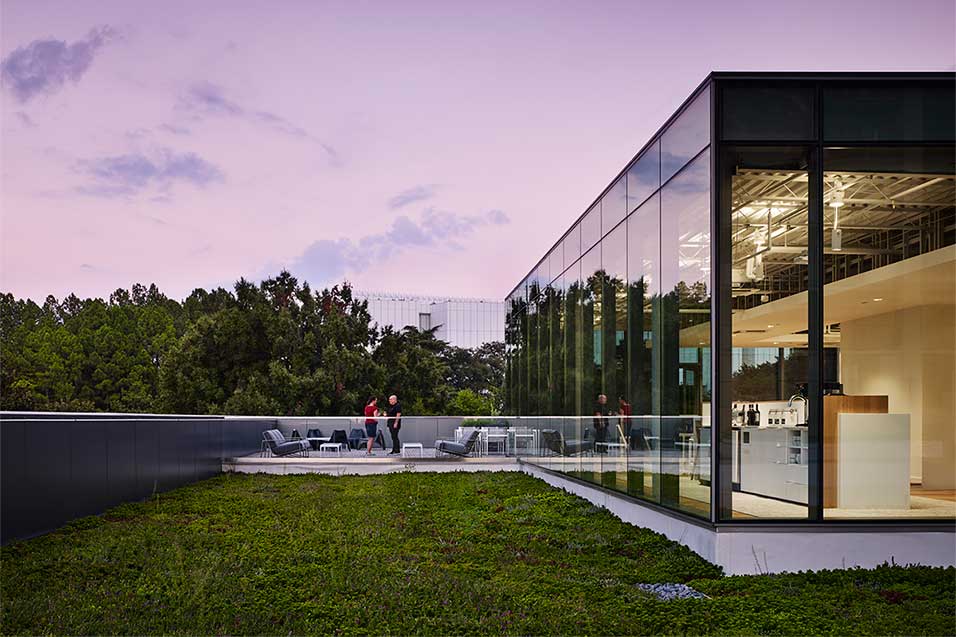How Interface’s headquarters cut its carbon footprint by 50%
Global leader in modular flooring transformed a 1950s office into a modern, sustainable space
Square Feet
40,000 square feet
Value
50% reduction in embodied carbon
Spotlight
Decarbonization strategy through adaptive reuse
“I think that the expectation of our employees is to be able to work in a building that is reflective of their values”
- Lisa Conway, VP Global Market Sustainability, Interface.
When it came to its corporate headquarters in Atlanta, Interface wanted to set a new standard in sustainability that aligned with its ambition to help reverse global warming, what the company calls Climate Take Back™.
Repurposing an old building would produce considerably less carbon than building new, so the modular flooring leader renovated a 40,000 s.f. building, adding half a fourth floor and remodelling the entire interior of the property. Specifically, Interface wanted the new space to show what’s possible through adaptive reuse, a specific form of building redevelopment that updates an existing structure for a new use or purpose.
Setting the mission
JLL, which had a longstanding relationship with Interface on the real estate transactions side, came on board as the sustainability consultant to help ensure their sustainability goals were realized.
Minimizing embodied carbon was a priority. As part of the process, the team conducted an embodied carbon analysis to showcase the benefits of reuse and used building materials that met sustainability and wellness goals.
Along with the Interface team, engineers and architects, JLL helped establish an innovative water retention/rainwater system, a highly specialized energy-saving HVAC system and a green roof. Once the building went into operation, JLL’s experts worked alongside Interface’s team to drive ongoing sustainability improvements and decrease operating costs.
“The reason buildings contribute 40 percent of global carbon emissions is because too often we’re creating new when that really isn't necessary”
- Chip DeGrace, Director of Design Purpose, Interface.
Making a positive impact
The social side of ESG was another critical area for Interface. JLL sustainability experts created a roadmap to build a comprehensive social sustainability strategy, tracking how the company’s choices and supply chain relationships can have a positive social impact on surrounding communities. Together, Interface and JLL identified a framework to measure progress on the program, which will support Interface's pursuit of the world's first social equity certification (SEAM) for another piece of its GA-based real estate portfolio.
As a result of the sustainability and design measures, Interface’s new HQ achieved WELL Gold and LEED v4 Platinum certifications, one of the first to do so in the state of Georgia. They also diverted 93% of waste and achieved a 50.48% reduction in embodied carbon compared to a baseline new build.
Given that 80% of today’s building stock will still be in use in 2050, Interface and JLL’s approach to adaptive reuse shows what’s possible in cutting carbon emissions and ensuring buildings are part of a more sustainable future.
For more information on how JLL can help you develop a decarbonization program aligned with your sustainability goals, including renewables and more, visit our Decarbonization Strategy page.
